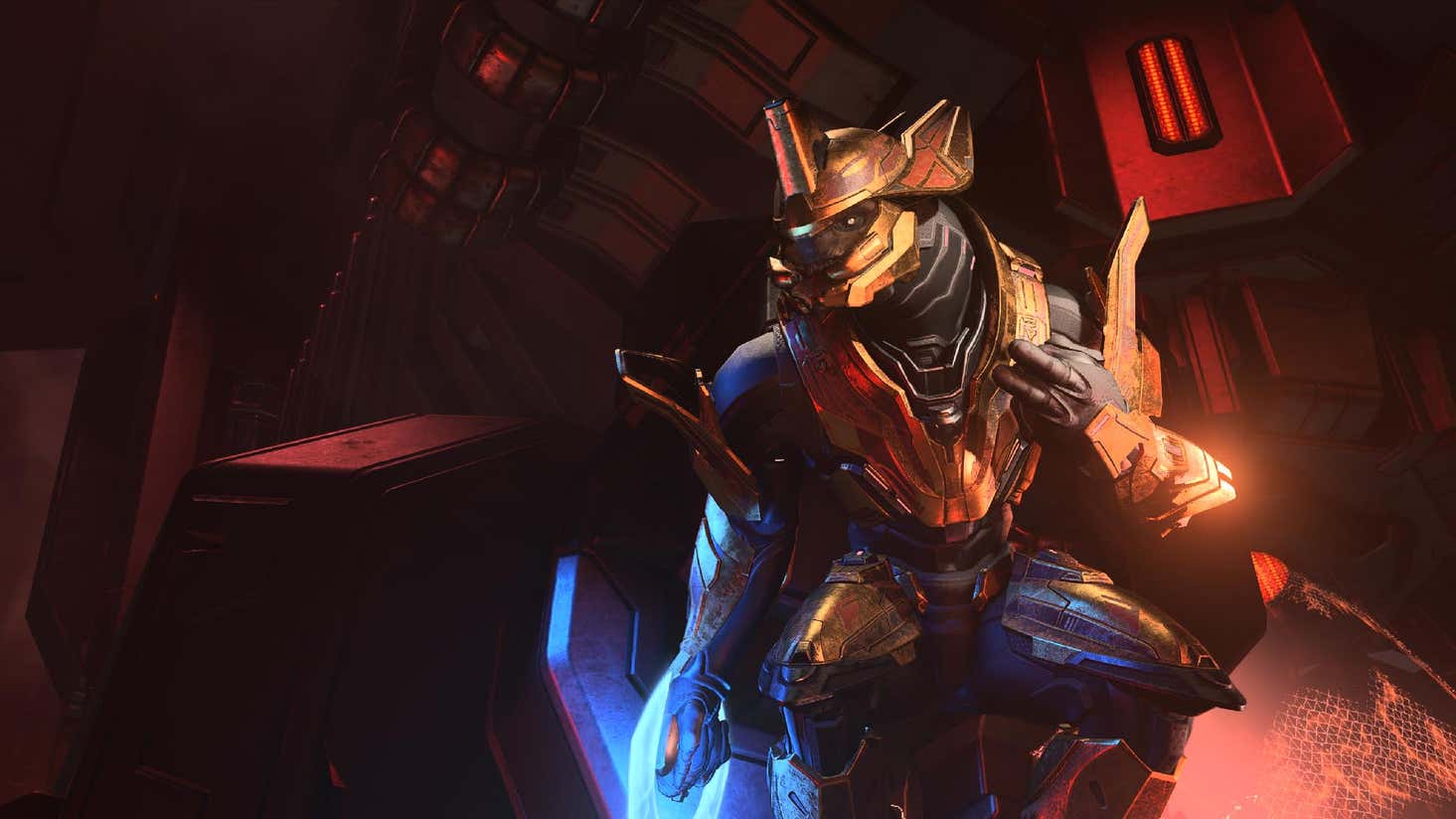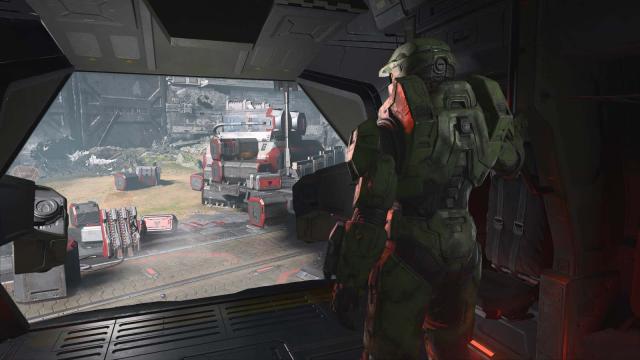You may want to be a hero, you may even want to be a legend, but know that sometimes it’s totally fine to be normal. Case in point here is Halo Infinite, a first-person shooter out today for Xbox and PC. If you’re just starting out the campaign, be sure to play on Normal — at least at first.
Read More: Halo Infinite: The Kotaku Review
Halo Infinite, the seventh mainline entry (depending on how you count), falls under the same challenge settings as previous games. In increasing order of difficulty, you can play through Infinite on Easy, Normal, Heroic, or — for true diehards — Legendary. Previous Halo games have always been designed with Heroic as the baseline. Halo Infinite is the first in the series where Normal is, well, the norm.
Series vets would do well to think of it like this: Normal is now Heroic, Heroic is closer to what Legendary usually is (save for 2004’s punishing Halo 2), and Legendary is…uh, we don’t talk about Legendary. We don’t want to scare it.
In another deviation from series norm, around two-thirds of Halo Infinite plays out in an open-world area. That mostly means you’re free to explore a large, mission-cluttered region as you see fit. But it also means something else: snipers everywhere. On higher difficulty levels, these jerks, typically jackals, can kill you in a single shot, often before you even see where it comes from. And that’s to say nothing of the boss fights, the arena-style gauntlet levels, the nail-biting vehicle levels, the multi-stage bases, the banshees that relentlessly chase you down, and the ceaseless introduction of new enemy classes that have totally new ways to kick your arse.
Halo Infinite, in other words, goes from 0 to 60 faster than this fall’s other buzzy Microsoft-published game.
“We’ve got some intentional spikes in difficulty where it’s like, OK, we’re dialling it to 11 here,” Halo Infinite character director Steve Dyck told Kotaku over a Zoom call this week.
“It’s 12, Steve,” Halo Infinite associate creative director Paul Crocker said on the same call.
“Yeah, 12,” Dyck said. “We’re dialling it to 12!”
These spikes were introduced consciously, meant, as Dyck put it, “to encourage the player to embrace every single piece of the sandbox and bring it to the fight. But then the AI is going to be, like, ‘OK, cool, we see what you’re doing, and we have an answer for that.’ It’s not a hard counter. But it’s just going to be something that adapts to the challenge and keeps that challenge feeling consistent.”
Even on the baseline Normal difficulty, these spikes are most keenly felt in Infinite’s many boss fights, which feature individualized strategies in lieu of the bullet-sponge encounters that so often show up in first-person shooters.

In all cases, you’ll have to devise strategies beyond just “shoot big thing with all the bullets.” For some fights, that means scouring the area for one of a handful of weapons that’ll actually deal damage to that boss, or pinpointing the exact weak spot you’re supposed to shoot. Others are so busy you’ll have trouble figuring out the solution. (One particular late-game fight killed me well over a dozen times, thanks to a wave of foes and one troubling brute with a instant-kill gravity hammer. I can’t imagine how much of a pain the encounter is on higher levels.)
Some of Halo Infinite’s standard, non-boss encounters can give you a run for your money, too. In addition to an arsenal of weapons, you have four tools at your disposal: a grappling hook, a portable shield wall, a threat-revealing motion sensor, and a thruster pack. On Normal, you’ll find yourself in firefights where you’ll want to use one or two to survive. On Heroic and Legendary, you’ll need to use them — and will likely need to use all four at once. It’s a lot to keep track of for an initial playthrough. It’s just a bit more approachable on Normal.
“From a balancing point of view, it really was about creating that world where anyone could enjoy being able to make those kinds of on-the-fly strategic choices of Master Chief,” Crocker said.
Changing the difficulty level in Halo Infinite isn’t something you can just do on the fly. Instead, you have to quit to the main menu, hit “load save” (not “continue”), and select a new difficulty level from a menu of options. The process is further complicated by the fact that, for some dungeon missions, it’s not always clear when you’ve made progress. If you close the game before you’ve accomplished any key objectives, you could find yourself all the way back to the start of the mission when you reload.
Even the people who make the game aren’t immune to Halo Infinite’s difficulty spikes. Crocker told me how, in the run-up to launch, having not played for a few weeks (too busy working on the game to play it), he found himself blindsided by a high-value target — mini-bosses strewn around Infinite’s open world.
“I went in and it was kicking my arse,” Crocker said. “Then I just went back, and got a whole bunch of marines, and came back a bit later — after having got my threat sensor — and the whole experience changed. But I felt like I earned that kind of change because I was using things that were available to me.”
So, yeah, start out with Normal — at least until 343 Industries adds cooperative mode next year.

Leave a Reply